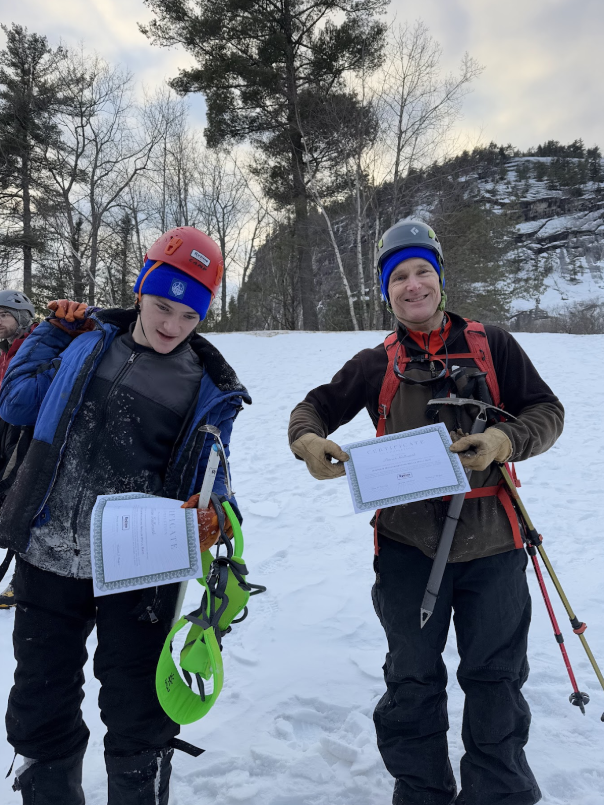The last year or so has been quite the action-packed year, with Geeks-Go-Peaks expeditions to climb Aconcagua, in Argentina in January of 2024, then a one-off attempt to climb Mt. Elbert in Colorado in May of 2024, then the great experience climbing Mt. Ararat in Turkey in early September.
Mt. Washington was an idea that came about in October. Peter had visited New Hampshire during the summer when he and I climbed a small mountain near where I live, Mt. Monadnock, that I've used to train for the various climbs over this last year. During that visit, I planted the idea then, mentioning other mountains in the region, particularly Mt. Washington, and how harsh the weather conditions are there despite not being a large mountain and that it would be great for weather acclimation for high altitude climbs.
Mt. Washington, and the White Mountains where Mt. Washington is among, has a lot of history that accompany the natural beauty and harsh conditions that the area is known for. The name for the White Mountains was first given by sailors from ships during colonial times seeing white peaks in the distance from the Piscataqua river estuary on the coast of Maine. Mt. Washington in particular, was first recorded by the Italian explorer Giovanni da Verrazzano, being the first European to mention the mountain in 1524.
Mt. Washington was an idea that came about in October. Peter had visited New Hampshire during the summer when he and I climbed a small mountain near where I live, Mt. Monadnock, that I've used to train for the various climbs over this last year. During that visit, I planted the idea then, mentioning other mountains in the region, particularly Mt. Washington, and how harsh the weather conditions are there despite not being a large mountain and that it would be great for weather acclimation for high altitude climbs.
Mt. Washington, and the White Mountains where Mt. Washington is among, has a lot of history that accompany the natural beauty and harsh conditions that the area is known for. The name for the White Mountains was first given by sailors from ships during colonial times seeing white peaks in the distance from the Piscataqua river estuary on the coast of Maine. Mt. Washington in particular, was first recorded by the Italian explorer Giovanni da Verrazzano, being the first European to mention the mountain in 1524.
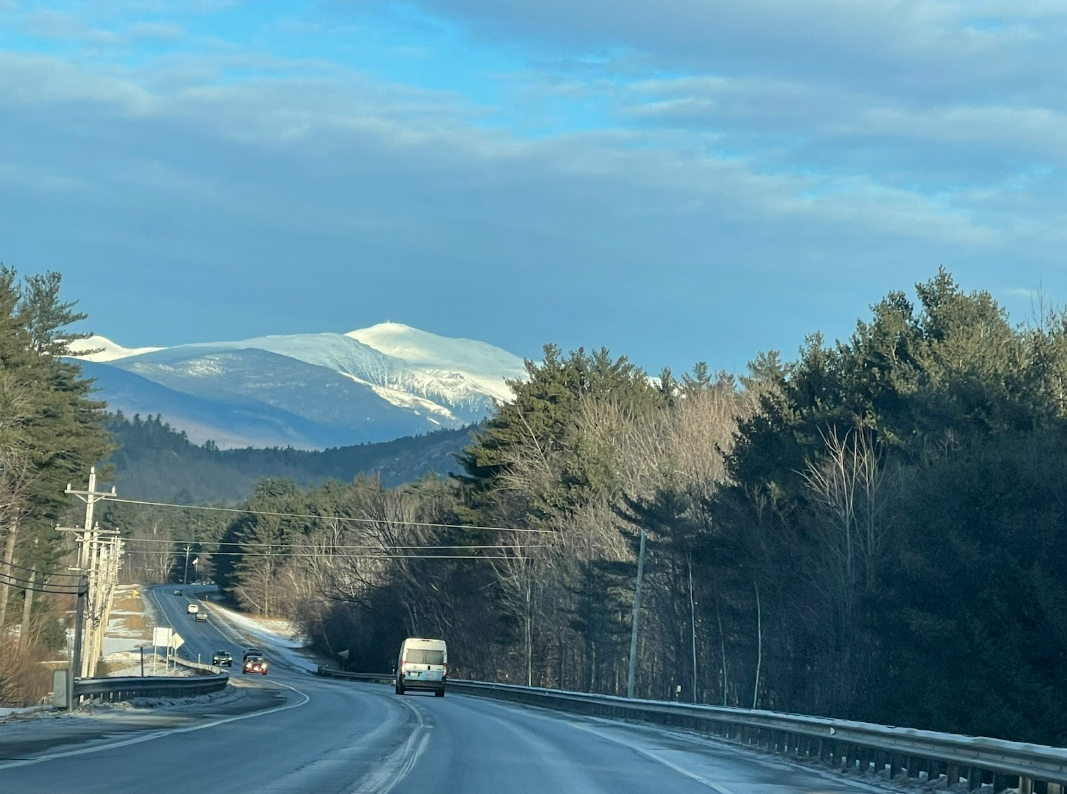
Some of the pre-European names for Mt. Washington were Kodaak Wadjo ("the top is so hidden", "highest mountain") Agiochook (The Great Place of the Concealed One), or by the Algonquians, Waumbik ("White Rocks").
Mt. Washington once held the world record for the highest wind speed clocked at 408 km/h (254 mph) and has an alpine or tundra climate at the top, not seen in the rest of the Appalachians and is the highest peak in the area of the Northeastern US (including nearby Quebec and other parts of eastern Canada). Another reason for it's harsh weather is that it's located at the convergence of several weather paths: storms from the south originating in the Atlantic, storms from the Western US, and the common nor'easters from the northeast off the Atlantic.
We finally decided to attempt the climb in January, when the weather would be at it's zenith of exceptional cold and offer the "full experience" of climbing in real winter conditions. We also realized that there are serious risks to this particular climb, as there are many stories of people not realizing when to turn around, getting caught in a storm, and in a few cases, people dying. One particular story I had known about while we were planning this was a woman, Kate Matrasova, an investment banker from New York, an experienced climber who was training for Everest, and there's a book my sister had told me about "Where You'll Find Me: Risk, Decisions, and the Last Climb of Kate Matrosova". With this in mind, we knew we wanted to hire a guiding company to ensure safety, particularly giving a sense of added security for those in the group who were new to mountaineering. After inquiry, there were many recommendations on social media enthusiastically suggesting Red Line Guiding, who we selected.
Originally, we had about 6-7 people sign up, though the final group of us that went on this trip was 4 of us: Peter Zeitsev, Matt Dowell, myself, and my son Kiran. This was to be Kiran's first real mountain climb, and I was surprised he signed up because he lives in New Hampshire and knows how cold it can be in regular, everyday life, let alone atop a mountain renowned for harsh winter conditions!
Our team lodged at an old New England style house that Julia kindly found for us, one where you can see the several living spaces of varying architectural styles that were appended to the house throughout the centuries, in Conway, New Hampshire.
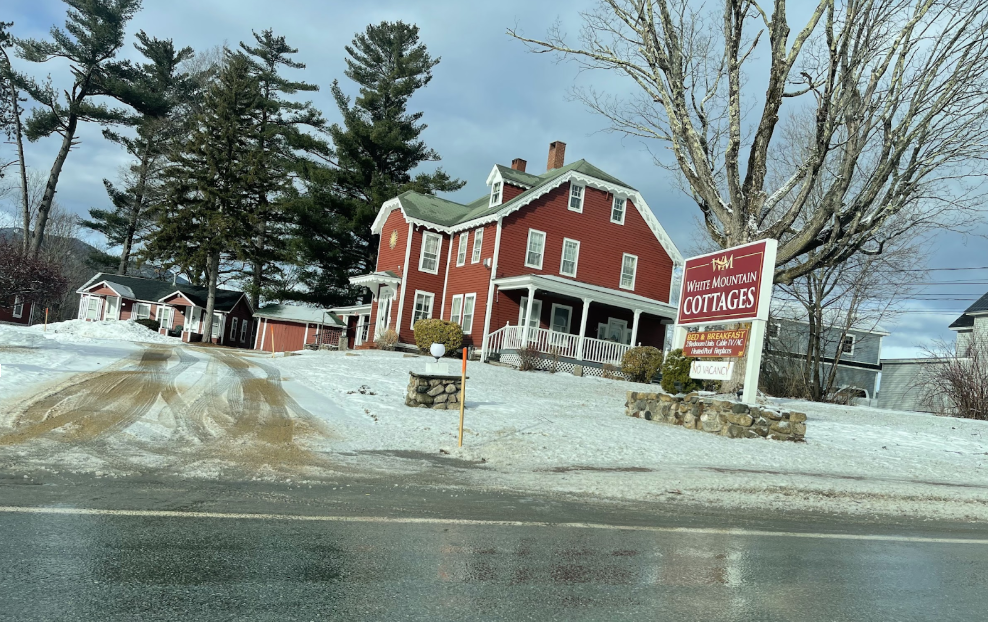
For the first day of our adventure, we planned to take part in the crampon and climbing training that Redline Guiding offered. We arrived at their "Base Camp" office to go over equipment that we had with us or were renting from them. Of course, the overarching theme was to make sure to use layers, which fortunately we were familiar with from our other climbs. We also made sure to have good quality mountaineering boots that crampons for donning crampons.
During this introduction, the guides also told us about the conditions and some of the stories of people getting stranded, and in particular, about Kate Matrasova, who the owner of the guiding company Mike Cherim was in the search party to find her and was the one who found her body. He discussed how the winds were up to 100 mph and temperatures 40 below (Fehrenheit) and how distressing it was to find her frozen with the hope that somehow, she was still alive. That was a story that installed in me some realistic fear about being in the same place under similar conditions.
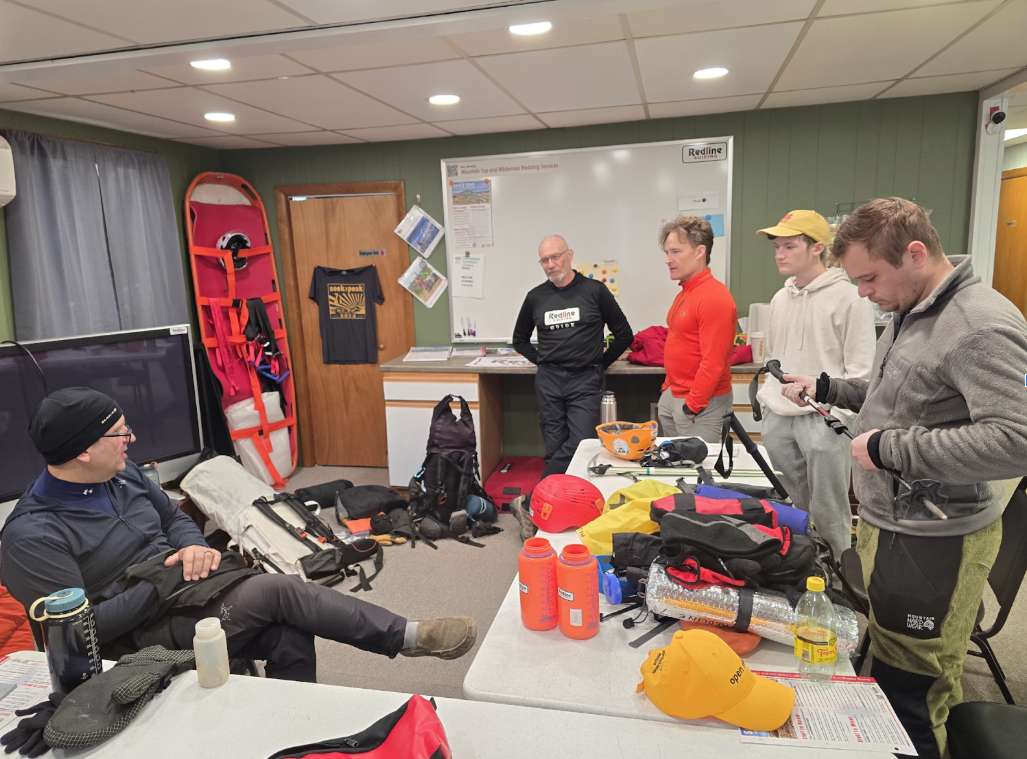
We also discussed our route to take to the top, the Winter Route, for our summit effort. The goal was to make it to a sub-summit, Lion's Head, which is the common decision point to continue or safely turn back because it offers the same conditions seen at the full summit. The one point that was stressed in hiking in these conditions was the need for thinking clearing and being realistic about safety versus over-enthusiastically continuing when its not safe.
For training, Redline chose a location near White Mountain Hotel and Resort, which abuts White Horse Ledge, popular with rock climbers, and had a few places to practice various techniques for crampons, and ice axe, self-arrest, and climbing in general.
We learned about the various crampon techniques:
French: known as flat-footing, keeping your crampons flat on the snow or ice, engaging all of the bottom points, rather than kicking straight into the ice with your front points, working well for up to 55 degree ascents. I thought of it as kind of a side-stepping, but from behind!
German: kicking straight into the slope in front of you, using the front points, and ice ax in both hands picked straight down for each step forward
American: a mix of both French and German for versatility
Russian: Watch whatever Peter does to climb up the mountain like a Gazelle!
German: kicking straight into the slope in front of you, using the front points, and ice ax in both hands picked straight down for each step forward
American: a mix of both French and German for versatility
Russian: Watch whatever Peter does to climb up the mountain like a Gazelle!
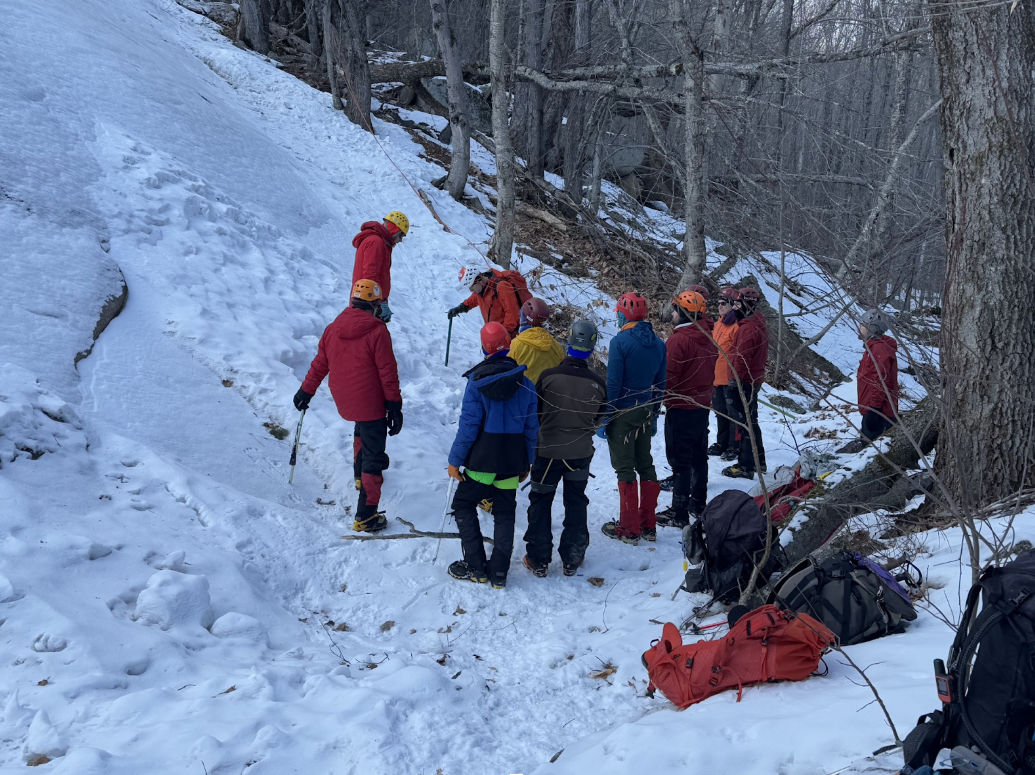
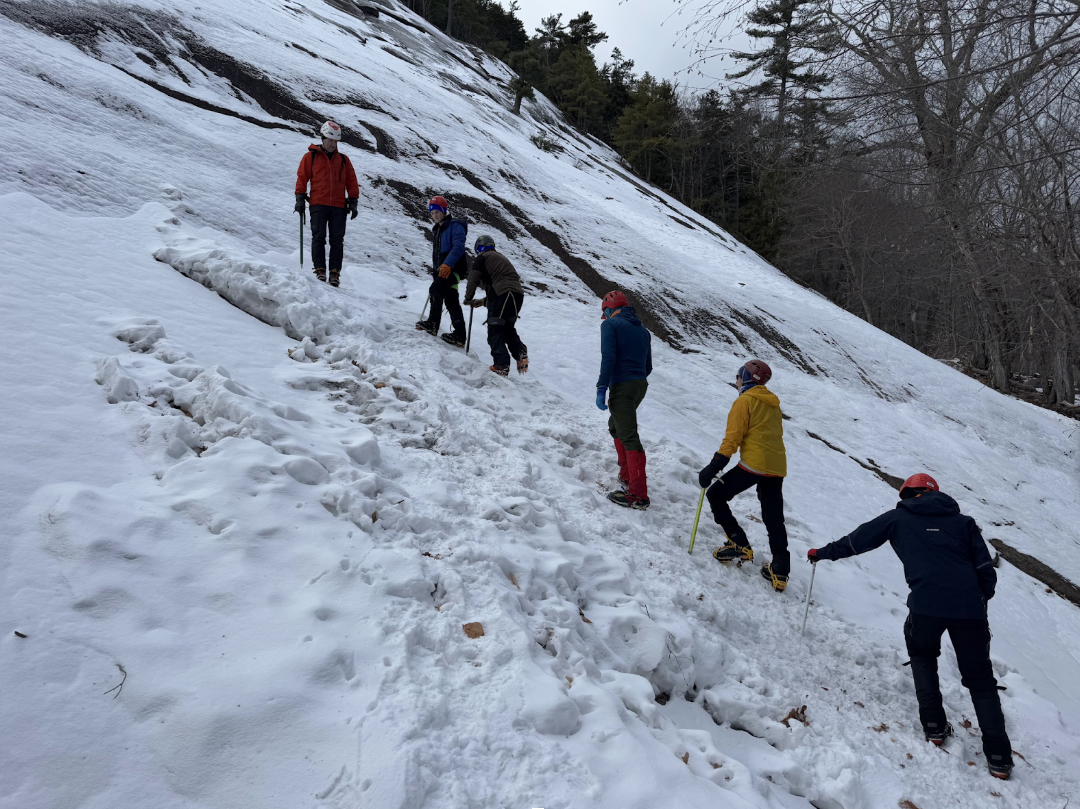
Lastly, we practiced self-arrest techniques. This consisted in finding a modest hill with ample snow on it that was used in attempts to get oneself sliding down in as realistic to "falling" and using the axe in various techniques to get a hook into the snow to stop the slide. Kiran was very dedicated to this as it resembled the kind of playing around in the snow at home he does.

That day ended with a hearty meal at an Irish-themed pub among other great restaurants in Conway. The next morning was going to be early!
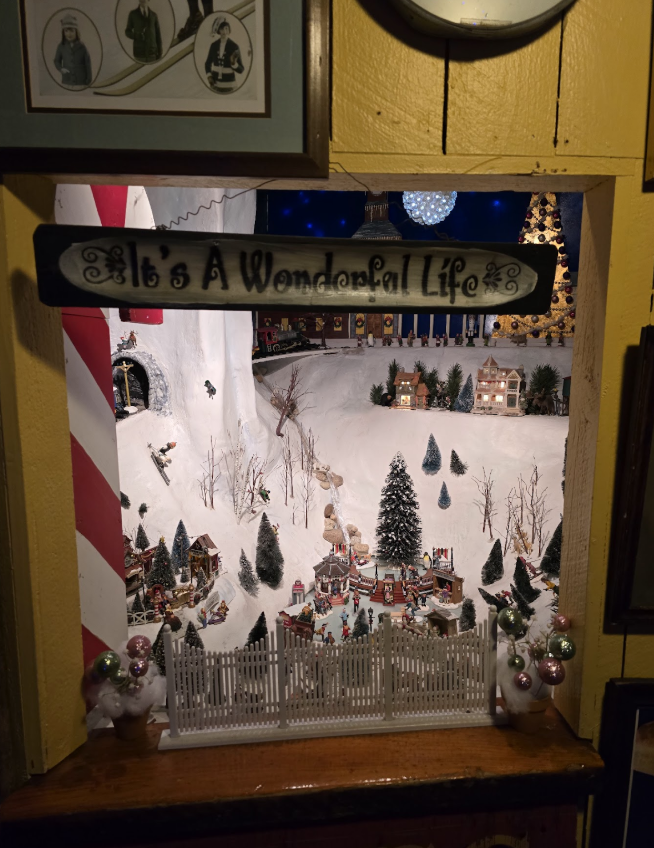
The next day we left the B&B early and headed to where we'd begin our climb at the AMC (Appalachian Mountain Club) Pinkam Notch Welcome Center. We put our first several layers and carried others in our packs that we'd apply as we ascended the mountain. We started our climb at 5:30, which it was dark but hardly any wind and not as cold as it could've been for the White Mountains. The temperature was cold, but not nearly as cold as it could've been!
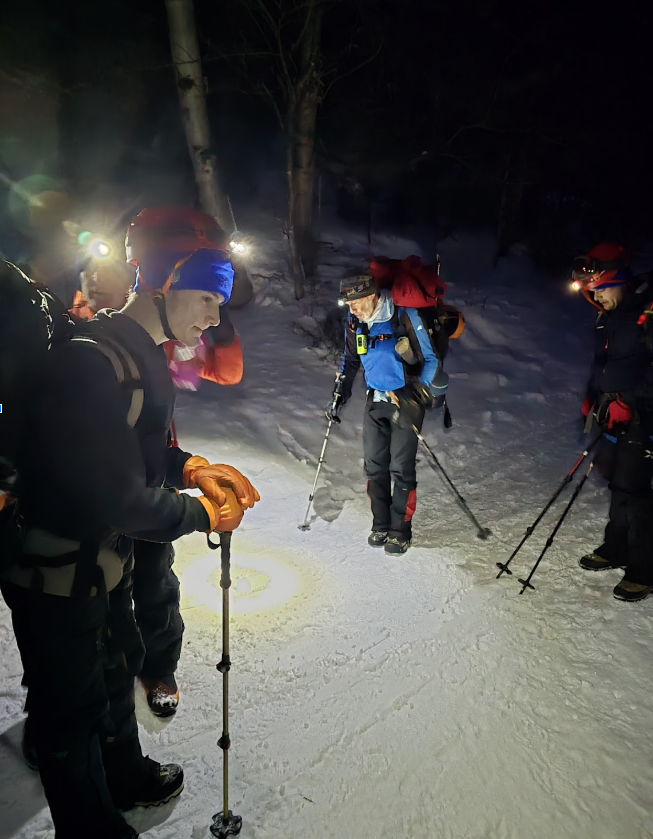
The first part of the climb was up a fairly wide trail that had decent packed down snow, with nothing too problematic to help us get good momentum. We arrived at the point we'd start up the winter route, off of the wide trail and into thicker forest and deeper snow. For this, we put on our crampons because the climb would get steeper, which it certainly did. We approached this ledge that the guides climbed up and released a rope to assist in climbing through. There was one spot with rock that was a little bit more difficult which the rope helped with to get up. The reminder after that was just steady, and steep. We continued on until we were above the treeline.
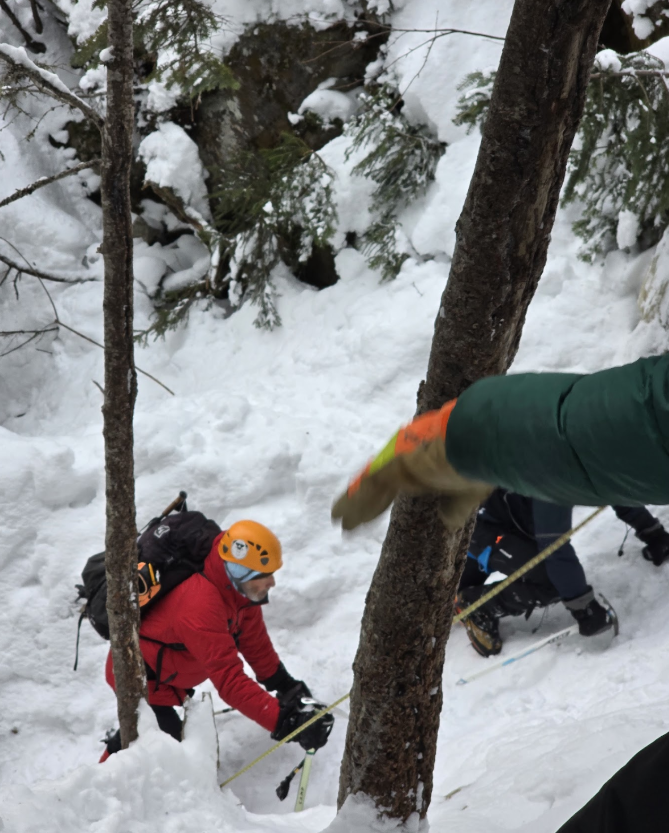
Once we were above the treeline, the wind picked up a bit, and it was certainly feeling colder which we stopped and made sure to add all extra layers to keep every bit of wind out, particularly straight into our faces, eating some food to get a caloric boost to handle what was ahead.
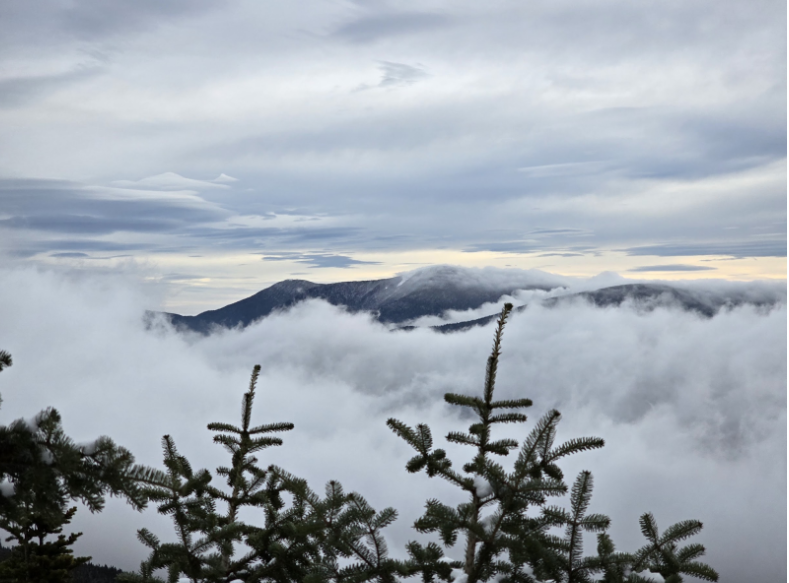
The scenery above the treeline was fantastic, looking like Narnia, and we kept ascending until we saw Lions Head, which is an important part of the climb. Each step the wind was picking up, but still not an impediment to our goal. Then, in the distance, we could see dark rocks of Lions Head, which is a sub-summit of Mt. Washington and a great bellwether point, having conditions very similar to the full summit.
As we climbed up Lions Head, it's as if someone turned on the switch of high winds. Each step it intensified. We found a spot between two rocks to get our bearings and everywhere around us, you could see huge swirls of snow blowing in vortexes around us. Our guides discussed with us what our next steps would be. Would we continue to the top? It seemed less likely, but they suggested we walk a little bit further on Lions Head to see just what we'd be dealing with in the next few miles to get to the top.
As we climbed up Lions Head, it's as if someone turned on the switch of high winds. Each step it intensified. We found a spot between two rocks to get our bearings and everywhere around us, you could see huge swirls of snow blowing in vortexes around us. Our guides discussed with us what our next steps would be. Would we continue to the top? It seemed less likely, but they suggested we walk a little bit further on Lions Head to see just what we'd be dealing with in the next few miles to get to the top.
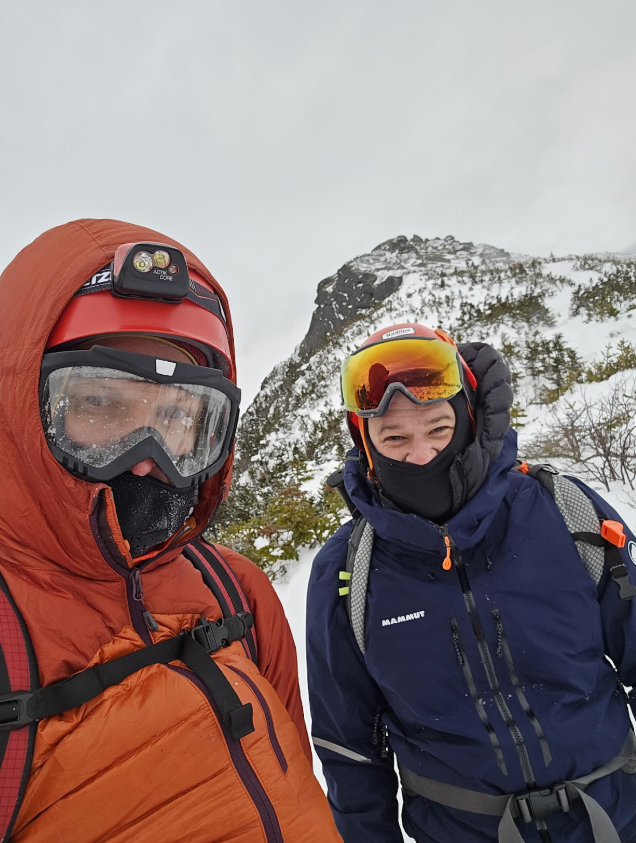
We went about 50 feet from where we were sitting. We could barely stand up, and each of us experiencing being pushed over from the wind. My son said to me "I'm terrified". We decided that we didn't want to continue. Even after deciding that, it was difficult to head down, my son repeating that he was terrified, and because of the difficulty hearing with the wind blowing as it was, he didn't realize that we were heading down and thought we were still continuing to the top! He was greatly relieved when I told him up close so he could hear "yes, we are headed down"
As we finally headed off of Lions Head, again, it was as if someone turned off the high wind. It was still windy, but nothing like what we had just experienced. We did take the opportunity to go to a point to look down into Tuckerman's Ravine, a famous steep with snow that skiers have as a bucket-list for intense skiing in the spring when snow persists often until June. From that vantage point, we had our last blast of the same wind that was blowing further up.
As we finally headed off of Lions Head, again, it was as if someone turned off the high wind. It was still windy, but nothing like what we had just experienced. We did take the opportunity to go to a point to look down into Tuckerman's Ravine, a famous steep with snow that skiers have as a bucket-list for intense skiing in the spring when snow persists often until June. From that vantage point, we had our last blast of the same wind that was blowing further up.
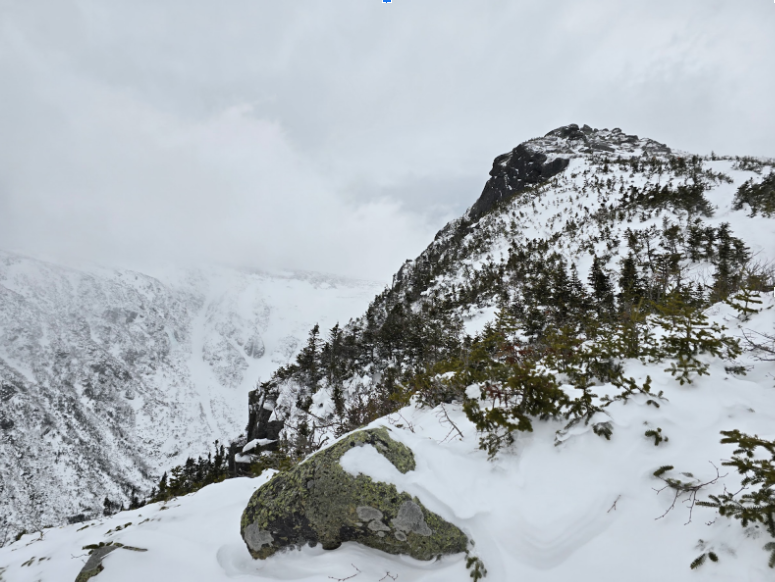
There was another group of climbers headed up, continuing to the top because that had the advantage that they wouldn't have to turn around because they would camp in the weather station atop Mt. Washington.
As we headed down, we did "collect" a few others from the other group who weren't going to continue to the top, and approached the intersection with a detour to the summer route to head down. The trail hadn't been traveled on much, and we approached a section where the snow was deep, moving on the side of a steep passage with a lot of snow that had the potential for avalanche that we carefully traversed after our guides went first to make sure it was stable enough.
After that point, it was steady downward, with each step being easier than before, and moving out of the timberline into a more forested area.
The rest of the descent was uneventful, and we approached a spot where we shedded layers and took off our crampons. We arrived back at the Pinkham Notch Visitors Center greeted by Julia in the late afternoon and headed back to Conway to celebrate our partial success to Lion's Head!
As we headed down, we did "collect" a few others from the other group who weren't going to continue to the top, and approached the intersection with a detour to the summer route to head down. The trail hadn't been traveled on much, and we approached a section where the snow was deep, moving on the side of a steep passage with a lot of snow that had the potential for avalanche that we carefully traversed after our guides went first to make sure it was stable enough.
After that point, it was steady downward, with each step being easier than before, and moving out of the timberline into a more forested area.
The rest of the descent was uneventful, and we approached a spot where we shedded layers and took off our crampons. We arrived back at the Pinkham Notch Visitors Center greeted by Julia in the late afternoon and headed back to Conway to celebrate our partial success to Lion's Head!

This trip was really excellent. It wasn't as high a mountain or as exotic a location as previous trips but the location was beautiful and it's fantastic that such a wild place can exist within a few hours of the metropolitan areas of Boston, New York, and Montreal. I've seen most of the Appalachian Mountains, but the White Mountains seem more like mountains out west or in other areas that are more rugged than the smoothed, often rolling mountains that the Appalachians are associated with. The experience also reinforced my appreciation for where I live, being so close to such a great natural feature!
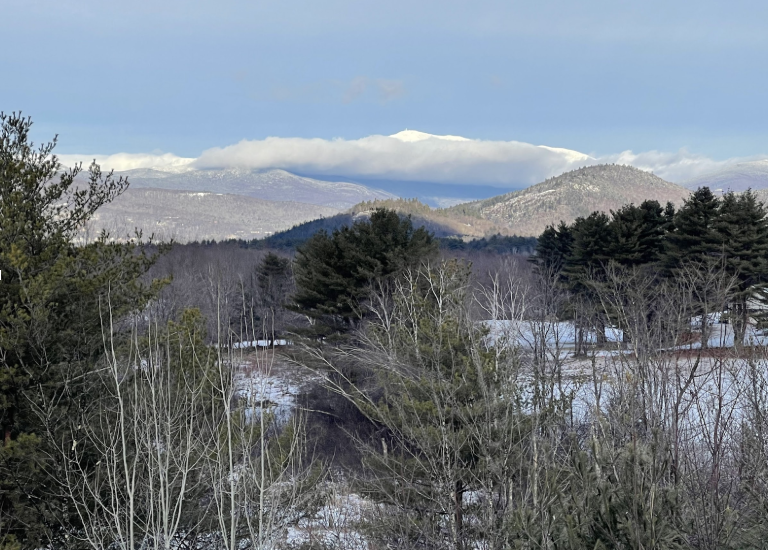
The winter aspect of this was what really provided the challenge. It's already hard to just be in the cold doing light activities for many people, let alone climbing a mountain, and with crampons and fighting wind and other elements beyond just cold.
The final and most important part of this experience is having been with my son on this trip. Life is short, and we sometimes forget to take time with the people we love. This was a great bonding experience for us, and something I know he'll remember for the rest of his life. I recently lost my father who was a submarine officer and many times in my childhood, he was gone on deployments for 6 months at a time. In between those deployments, we did have some experiences where we went on trips, and one in particular was a trip through the Smokey Mountains, and in particular, a hike we did in Tablerock State Park in South Carolina. At the time, we were kids and that hike was really hard, but in retrospect, one of the best memories I have with my father.
The final and most important part of this experience is having been with my son on this trip. Life is short, and we sometimes forget to take time with the people we love. This was a great bonding experience for us, and something I know he'll remember for the rest of his life. I recently lost my father who was a submarine officer and many times in my childhood, he was gone on deployments for 6 months at a time. In between those deployments, we did have some experiences where we went on trips, and one in particular was a trip through the Smokey Mountains, and in particular, a hike we did in Tablerock State Park in South Carolina. At the time, we were kids and that hike was really hard, but in retrospect, one of the best memories I have with my father.
